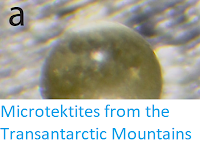Asteroid 2018 HC1 passed by the Earth at a distance of about 471 700
km (1.23 times the average distance between the Earth and the Moon, or
0.31% of the distance between the Earth and the Sun), slightly before 10.30 pm
GMT on Thursday 19 April 2018. There was no danger of
the asteroid hitting us, though were it to do so it would not have
presented a significant threat. 2018 HC1 has an estimated
equivalent
diameter of 8-27 m (i.e. it is estimated that a spherical object
with
the same volume would be 8-27 m in diameter), and an object of
this
size would be expected to explode in
an airburst (an explosion caused by superheating from friction with the
Earth's atmosphere, which is greater than that caused by simply
falling, due to the orbital momentum of the asteroid) in the atmosphere
between 35 and 18 km above the ground, with only fragmentary material
reaching the Earth's surface.
Image of 2018 HC1 taken with the iTelescope T30 500 mm Reflector Deep Field Telescope at Siding Spring Observatory
in New South Wales on 21 April 2018. The image is a composite of fifteen five second exposures, the dotted lines being stars which have moved
over the course of the exposures and the asteroid the object circled in red at the centre of the image. Steven Tilley/iTelescope/Lagniappe Observing.
2018 HC1 was discovered on 21 April 2018 (two days after its closest approach to the Earth) by the University of Arizona's Catalina Sky Survey,
which is located in the Catalina Mountains north of Tucson. The
designation 2018 HC1 implies that it was the 28th asteroid (asteroid C1)
discovered in the second half of April 2018 (period 2018 H).
The calculated orbit of 2018 HC1. Minor Planet Center.
2018 HC1 has an 879 day orbital period and an eccentric orbit
tilted at an angle of 8.90° to the plane of the Solar System, which
takes it from 0.75 AU from the Sun (i.e. 75% of he average distance at
which the Earth orbits the Sun, slightly outside the orbit of the planet Venus)
to 2.83 AU from the Sun (i.e. 283% of
the
average distance at which the Earth orbits the Sun, and almost twice
as distant from the Sun as the planet Mars). It is therefore
classed as an
Apollo Group Asteroid (an asteroid that is on average further from the
Sun than the Earth, but which does get closer). This means that close
encounters between the asteroid and Earth are common, with the
last having occurred in May 1941 and the next predicted
in May 2117.
See also...
Follow Sciency Thoughts on Facebook.








